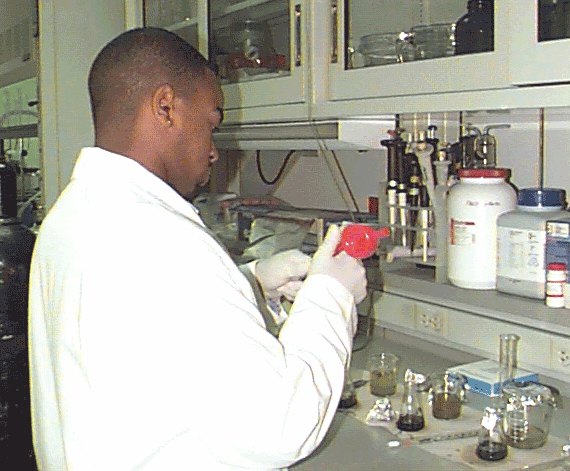
Sediment Extraction
Analyte Extraction
Prior to analysis by GC/MS or HPLC, chemical analytes need to be extracted from samples. Different methods are used depending upon the sample matrix (e.g., water, soil, air, urine, biological tissues) and the chemical characteristics of the analyte(s) of interest.
For organic chemical analytes different solvents are used for extraction following the concept of like-dissolves-like (see Ch. 19 in Fifield and Haines, 2000)
- Maceration - sample homogenization to uniformly extract chemicals
- Dissolution and extraction - solvents that have a high affinity for the chemicals of interest are allowed to flow through homogenized samples to obtain a liquid extract containing the analytes of interest
- Aqueous or polar solvents (e.g., methanol, acetonitrile) for hydrophilic analytes
- Non-polar solvents (e.g., hexane) for lipophilic analytes
- Partition - the transfer of analyte(s) from the extraction solvent to another solvent
- Concentration - heating an extract to remove excess solvent without losing analytes of interest (use low heat and reduced pressure); this increases the concentration of analyte(s) to be measured